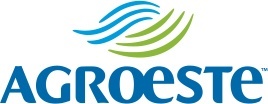
The cash flow statement complements the balance sheet and income statement. It is part of a public company’s financial reporting requirements since 1987. Cash flows from financing (CFF) shows the net flows of cash used to fund the company and its capital.

How to Create Positive Cash Flow
Further assume that there were no investing or financing transactions, and no depreciation expense for 2018. Transactions that do not affect cash but do affect long-term assets, long-term debt, and/or equity are disclosed, either as a notation at the bottom of the statement of cash flow, or in the notes to the financial statements. The cash flow statement (CFS), along with the income statement and balance sheet, represent the three core financial statements. The CFS is distinct from the income statement and the balance sheet because it does not include the amount of future incoming and outgoing cash that has been recorded as revenues and expenses. Therefore, cash is not the same as net income, which includes cash sales as well as sales made on credit on the income statements. Cash flow from investing (CFI) or investing cash flow reports how much cash has been generated or spent from various investment-related activities in a specific period.
Investing Activities Leading to a Decrease in Cash
What it doesn’t show is revenue or expenses, or any of the business’s other cash activities that impact your company’s day-to-day health. However, the indirect method also provides a means of reconciling items on the balance sheet to the net income on the income statement. As an accountant prepares cash flow from assets equals: the CFS using the indirect method, they can identify increases and decreases in the balance sheet that are the result of non-cash transactions. As for the balance sheet, the net cash flow reported on the CFS should equal the net change in the various line items reported on the balance sheet.

Determine Operating Cash Flow (OCF)
A balance sheet lists a company’s assets, liabilities, and shareholders’ equity at a point in time, typically at the end of a period, such as the end of a quarter or year. In this situation, FCF would reveal a serious financial weakness that wouldn’t be apparent from an examination of the income statement. Efficient management of accounting-related processes also plays a significant role in boosting CFFA. Accelerating the collection of accounts receivables through early payment discounts and proactive credit policies can expedite cash inflows. Additionally, monitoring inventory levels and implementing just-in-time inventory systems can reduce holding costs and optimize cash utilization.
Who is this formula best suited for?
The first step is calculating your company’s operating cash flow (OCF), that is, cash flow from operations. The cash flow statement measures the performance of a company over a period of time. But it is not as easily manipulated by https://www.bookstime.com/articles/bookkeeper360 the timing of non-cash transactions. As noted above, the CFS can be derived from the income statement and the balance sheet. Net earnings from the income statement are the figure from which the information on the CFS is deduced.
- The resulting figure is your NCS, representing the net cash used for or received from investments in the company’s long-term assets.
- Put another way, it is the amount that would remain if the company liquidated all of its assets and paid off all of its debts.
- Assume your specialty bakery makes gourmet cupcakes and has been operating out of rented facilities in the past.
- The first step in calculating CFFA is determining Operating Cash Flow, though you may also see this referred to as cash flow from operations.
- Using the indirect method, actual cash inflows and outflows do not have to be known.
By consistently monitoring and optimizing these areas, businesses can progressively improve their cash flow from assets, ensuring they are poised for growth and resilient in the face of financial challenges. Liquidity is another significant dimension that cash flow from assets highlights. A positive CFFA suggests that a company generates adequate cash to meet its immediate obligations, reducing its dependence on external funding. If you’re a small business owner, there’s a good chance you’re often searching for ways to improve cash flow. Sometimes, alternative lending options or new business ideas can provide solutions, but you may first want to look at your business’s cash flow from assets to find opportunities to build up your profit.

The cash flow statement is derived from the income statement by taking net income and deducting or adding the cash from the company’s activities shown below. FCF can be calculated by starting with cash flows from operating activities on the statement of cash flows, because this number will have already adjusted earnings for non-cash expenses and changes in working capital. The operating activities cash flow is based on the company’s net income, with adjustments for items that affect cash differently than they affect net income.
Add Back Noncash Expenses
The magnitude of the net cash flow, if large, suggests a comfortable cash flow cushion, while a smaller net cash flow would signify an uneasy comfort cash flow zone. One was an increase of $700 in prepaid insurance, and the other was an increase of $2,500 in inventory. In both cases, the increases can be explained as additional cash that was spent, but which was not reflected in the expenses reported on the income statement. If you do your own bookkeeping in Excel, you can calculate cash flow statements each month based on the information on your income statements and balance sheets. If you use accounting software, it can create cash flow statements based on the information you’ve already entered in the general ledger. While depreciation is an expense that reduces a company’s net income, it doesn’t represent an actual cash outflow.


Deixar Um Comentário